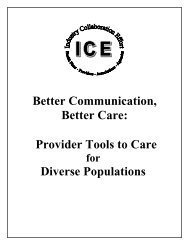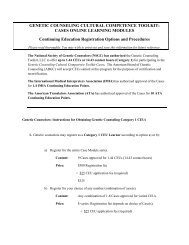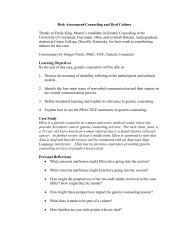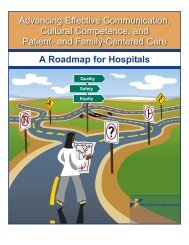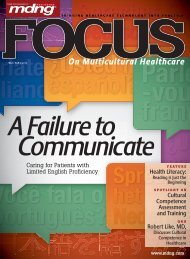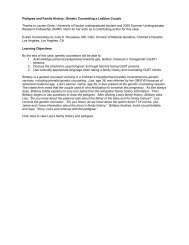making the business case for culturally and linguistically appropriate ...
making the business case for culturally and linguistically appropriate ...
making the business case for culturally and linguistically appropriate ...
You also want an ePaper? Increase the reach of your titles
YUMPU automatically turns print PDFs into web optimized ePapers that Google loves.
Major Themes• Minority <strong>and</strong> LEP Consumers are a Business Market. As <strong>the</strong> US populationchanges <strong>and</strong> <strong>the</strong> LEP population increases, successful health care organizations mustdevelop <strong>business</strong> strategies to address <strong>the</strong> needs of <strong>the</strong>se populations. This willbecome increasingly true as we approach 2050 when <strong>the</strong> census predictions projectthat <strong>the</strong> percentage of minority populations will equal or exceed <strong>the</strong> percentage ofwhat are now non-minority populations.• Cost-effective Spending Leads to Subsequent Savings. Implementing CLAS projectscan be cost effective <strong>for</strong> health care organizations.• Government Requirements Compel Organizations to Take on CLAS. Title VI of <strong>the</strong>Civil Rights Act <strong>and</strong> <strong>the</strong> CLAS St<strong>and</strong>ards are required <strong>for</strong> equity in health care.• CLAS is <strong>the</strong> Right Thing to Do. Many organizations that have engaged in orimplemented CLAS st<strong>and</strong>ards, as described throughout this report, are doing sobecause <strong>the</strong>y believe it is <strong>the</strong> right thing to do, <strong>and</strong> not because <strong>the</strong>y are required to doso by law or regulation. Organizations with a history of meeting <strong>the</strong> needs of diversepatient populations view <strong>the</strong>ir role in addressing <strong>the</strong> needs of all patients <strong>the</strong>y serve asan important part of <strong>the</strong>ir organizational culture.Key Findings <strong>and</strong> Lessons LearnedThis report documents seven key findings <strong>and</strong> lessons learned on <strong>the</strong> best ways to implementCLAS in a variety of health care settings. These include:• Linguistically <strong>appropriate</strong> services may be <strong>the</strong> first logical step <strong>for</strong> successfulimplementation of <strong>the</strong> CLAS st<strong>and</strong>ards;• Barriers to CLAS implementation (real <strong>and</strong> perceived) need to be identified <strong>and</strong>overcome;• Work<strong>for</strong>ce <strong>and</strong> bilingual employee development is key to implementing CLAS;• Exploration <strong>and</strong> integration of community partnerships <strong>and</strong> resources is important<strong>for</strong> successful CLAS interventions;• Technology can be useful in supporting a system <strong>for</strong> serving LEP populations;• Per<strong>for</strong>mance measurement should be a component of any CLAS project plan, <strong>and</strong>• There are many existing resources that provide in<strong>for</strong>mation on how to implementCLAS in health care settings.Subsequent to <strong>the</strong> release of <strong>the</strong> CLAS st<strong>and</strong>ards, <strong>the</strong> number of health care organizationsacross <strong>the</strong> country that have voluntarily implemented projects <strong>and</strong> initiatives aimed atcomplying with <strong>the</strong> CLAS st<strong>and</strong>ards has grown. Many organizations, including thosehighlighted in this report, have <strong>for</strong> years prior to publication of <strong>the</strong> CLAS st<strong>and</strong>ards strived toprovide <strong>culturally</strong> competent care. 3 The <strong>for</strong>esight <strong>and</strong> commitment of senior leadersresponding to changing U.S. demographics led <strong>the</strong>se organizations to alter <strong>the</strong> way <strong>the</strong>yprovide health care to people outside <strong>the</strong> majority culture, including those with languagebarriers.3 Cultural <strong>and</strong> Linguistic Competence in Health - a set of congruent behaviors, attitudes, <strong>and</strong> policies that cometoge<strong>the</strong>r in a system, agency, or among professionals that enables effective work in cross-cultural situations.Office on Minority Health. http://www.omhrc.gov/templates/browse.aspx?lvl=2&lvlID=117



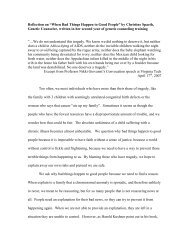
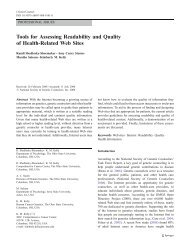

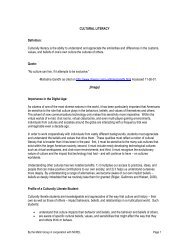
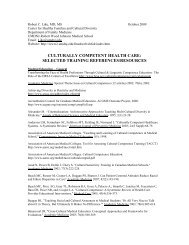

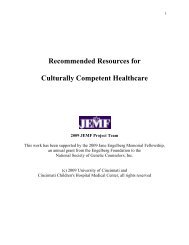
![Breaking Bad News PPT[1] - Genetic Counseling Cultural ...](https://img.yumpu.com/35003134/1/190x146/breaking-bad-news-ppt1-genetic-counseling-cultural-.jpg?quality=85)
